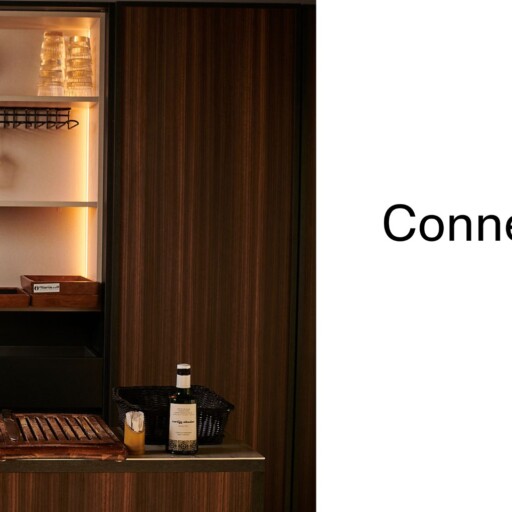She has always been a curious person. As a child, she would draw tirelessly every little detail of the room she imagined in her head, and she loved taking apart all kinds of objects, from clocks to thermometers, to delve into their interiors. And to understand. To see beyond.
Inma Bermúdez (1977), born in Murcia, but with a Valencian soul, knew very early on that her passion had a name and did not hesitate to become an industrial designer. Since then, she has not stopped. She is the first Spaniard to design for IKEA, with whom she continues to collaborate, she has worked for Lladró and recently created a collection of taps for Roca.
Her pieces combine ingenuity, aesthetics, functionality and simplicity, such as the iconic portable Follow Me lamp for the Catalan firm Marset, the mega-hit that has brought her so much joy. “We are problem solvers,” she insists. Awarded the National Design Award in 2022, Inma Bermúdez has a mantra that she keeps repeating: “Difficult times are coming. You need us. Place us where decision are made that affect people’s lives, the planet. Give us space.
Ver esta publicación en Instagram
The National Design Award was created in 1987 and you are the third woman, and the youngest, to receive it. Are things changing?
There is still a long way to go. In the world of design, there are many women working in studios, but very few studios bear their names. This will take more time. Although I never wanted a studio with my name on it, as it seemed like too much responsibility, and I thought it was better to work for someone else, close the computer on Friday and not come back until Monday. But life has opened doors for me, led me down different paths, and in the end, destiny forced me to have my own studio. I applied for the award because people close to me encouraged me, but I did not believe I would receive it. So I hope that this award will somehow encourage women in my field and in many others.
Do you also feel a certain responsibility now?
Yes, indeed. Another recipient of the award told me: “This is like a surname, for life”. Now I want to take a break to think, although it has not been entirely possible because everything is moving so fast in this society. But I do want to contribute my bit to change things in the world of design, especially when it comes to sustainability. There is still much to be done in that regard. The award also serves as a platform for me. I am quite persistent, and since receiving the award, whenever I can, I emphasise that designers are professionals who can do more than just create products. We provide creative solutions, and in the future, it will be crucial to be highly creative in addressing environmental and social challenges.
That is why I would like to collaborate with companies in a different way, although I do not know how yet. So, I am going to go with the flow, take things slowly, as I have always done in my life, choose projects and try to convince companies to do things more consciously, to emphasise the importance of repair and promote more controlled consumption.
Ver esta publicación en Instagram
Have you been able to put it into practice, to be more accurate?
Yes, we had the opportunity with our project for the Valencian winery Dominio de la Vega, which has transitioned to 100% organic production. The commission they gave us went beyond helping them with their image. At first, I did not want to accept because I have always been very insecure, and I thought I would not be capable, which has always made me work much harder. I knew nothing about wine and I had never designed a label before, but in the end, it became a comprehensive and very satisfying project. I believe we brought a lot of freshness to the project because we were not influenced by preconceptions and we questioned everything, often maybe because we were a bit naïve.
Ver esta publicación en Instagram
A few years ago, you were part of an initiative with other colleagues called “For a Ministry of Design”, where you advocated for the involvement of designers in public management. Would you like to be able to advise in this field as well?
Absolutely. In the City of Helsinki, there is a designer who helps and provides guidance to see the city’s problems and situations from a different perspective, at all levels. As far as I know, it is a position unique to Helsinki, but it could be viable in any public administration, political parties, etc… Designers are problem solvers, after all.
You mentioned that sustainability is no longer just another objective of design, but the foundation of everything, and that we humans are the true virus of the planet. But doesn’t design encourage increased consumption?
We are indeed the worst virus on this planet, no doubt about it. We are heading towards extinction and, honestly, I think it is better that way because we are doing a terrible job. It seems that we do not want to realise it, that we do not want to think. And it’s unethical. But it’s not the fault of design.
The primary responsibility lies with the consumer, who thinks that if a vase costs three euros, it does not matter if it breaks and is thrown away. That’s why we need to change our relationship with products, the addictive form of cosumption. We should be more aware of our actions from the moment we get up to the moment we go to bed, choosing local and seasonal products, repairing things with our hands, and moving through the world in a different way.
Ver esta publicación en Instagram
Biomaterials seem to be one of the keys to a more sustainable future. Are they part of the solution?
It is good to innovate with new materials, to have other options, but the key also lies in using the ones we already have more effectively. It is not about demonising plastic, but rather having a better recycling system that works well. Single-use plastic is what we need to eradicate.
What significance does wood have in your creations?
Wood is a noble material that ages very well and has been with us since the beginning of time. We have a beautiful project at Matadero Madrid called La manada perdida (The lost herd), which consists of a family of five animals made of wood, crafted in the traditional way: with saw, sandpaper, and screws. We wanted to show the origin of the wood, to use it as much as possible, generating minimal waste. We wanted to highlight the combination of beauty and ruggedeness, with marks and parts with bark…
Ver esta publicación en Instagram
Is design synonymous with aesthetics?
Design is not just about aesthetics, it goes beyond that. It is not about deciding whether something should be blue or green, although it is a part of it. Design is more. It is about thinking. Everything is designed and analysed, even what you cannot feel. It is about how we get on or off a bus, or how we navigate through a hospital, for example. Designing is creating things that make people’s lives easier.
Ver esta publicación en Instagram
Did you ever imagine you would get here?
I never imagined in my wildest dreams that I would work for IKEA or Lladró, create my Follow Me lamp or collaborate with Roca, with whom I have developed an award-winning collection. I have already won some awards and there will be more to come. It has been wonderful, but it is a result of putting in a lot of effort. I truly love my job, it is a passion of mine. I have worked hard and also been fortunate. And when something doesn’t go well, it becomes a learning experience.
Ver esta publicación en Instagram
Ver esta publicación en Instagram
Speaking of IKEA, the first thing you did for them was a small, compact and highly functional washbasin. Since then have been calling you “Inma Smart”.
Yes, that’s true. The washbasin was a very basic item that offered many solutions, which is exactly what Ikea aims for: a reference with different possibilities. It was in 2006, and at that time there were no washbasins with hooks, it was the first one. No one had thought of it before. They thought it was super innovative and said, “This girl seems smart”. So I started working on bathrooms and then gradually moved to other departments. With IKEA, I gained a wealth of experience.
Are you still amazed to see your designs in hotels, restaurants, your friends’ homes…?
I am still amazed, and it is one of the coolest things about working with IKEA. The impact of their products is tremendous. Knowing that many people enjoy my designs is awesome. Even a coat rack I designed for the company has been used as a drip stand in hospitals during the pandemic.
Do you like it when your pieces are given other uses?
Of course, everyone is creative in some way. When I heard about it, I thought it was great.




